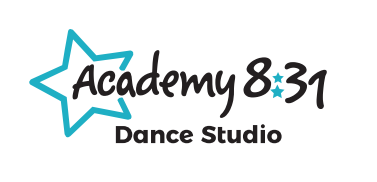Studio Lingo 101: A Parent’s Guide to Dance Terms
If you’ve ever heard your child say something like “We did pliés across the floor and learned a new combo,” and found yourself nodding along without a clue… don’t worry, you’re not alone!
Whether you’re brand new to the world of dance or just need a quick refresher, we’ve got you covered. At Academy 831, we believe parents are part of the journey too, and understanding the language your dancer is learning can help you feel more connected (and less confused!) as they grow in class.
Here’s a quick guide to common dance terms you might hear from your child—what they mean, and how they fit into the dance experience.
Plié (plee-AY)
A French word meaning “to bend,” a plié is when dancers bend their knees, either slightly (demi-plié) or deeply (grand plié). It’s one of the most fundamental movements in ballet and helps with strength, control, and balance.
You’ll often see pliés at the beginning of class during warm-ups.
Combo (Short for Combination)
This refers to a short sequence of choreographed steps. Combos are usually taught at the middle or end of class and help dancers practice rhythm, memory, and transitions.
“We learned a combo today!” usually means your dancer learned a small routine.
Across the Floor
These are movement exercises that travel from one side of the studio to the other. Dancers often go in small groups and practice steps like skips, turns, leaps, or chassés while moving forward.
Great for building confidence, coordination, and performance skills.
Chassé (sha-SAY)
A glide-step where one foot literally “chases” the other. It’s smooth, rhythmic, and often used in both ballet and jazz styles.
You'll see this one a lot in upbeat combinations and recital routines!
Relevé (rehl-uh-VAY)
This means “to rise.” Dancers lift their heels off the ground to balance on the balls of their feet. It builds ankle strength and balance.
Your dancer might mention they did this at the barre or during center work.
Counts / 8-Count
Dancers often learn routines in counts of 8 to match musical phrasing. “5-6-7-8” is how most combinations start and how they keep the beat.
Pro tip: You can count music in the car with your child—it’s great practice!
Freestyle / Improv
This is an unstructured movement where dancers can express themselves without choreography. It encourages creativity and confidence. At Academy 831, we love giving dancers space to move in their own way!
First Position, Second Position, etc.
These are the basic positions of the feet (and arms) in ballet. Your child might be learning these in class without even realizing how much they’re improving balance and discipline!
Dance might have its own language, but once you learn a few key terms, it’s easy to follow along. Plus, your dancer will love knowing you “speak their language.”
If you ever have questions during class or rehearsal season, don’t hesitate to ask! We’re here to support not just our dancers, but their biggest fans, too.
